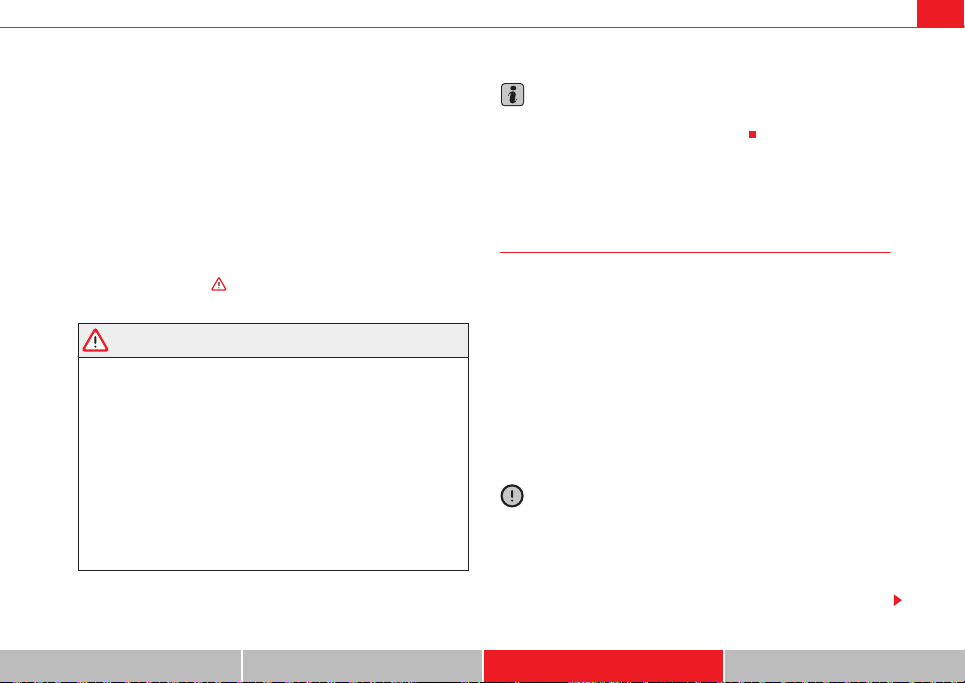Loading ...
Loading ...
Loading ...

Checking and refilling levels 219
Safety First Operating Instructions Practical Tips Technical Specifications
The safety of the LPG system guarantees operation without risk. The following
safety measures have been adopted:
• The LPG tank has a solenoid valve which closes automatically when the
engine is switched off (ignition off) or when running on petrol.
• A solenoid type main valve disconnects the supply of gas to the engine
compartment when the engine is switched off or running on petrol.
• A safety valve in the LPG tank with pipes to the outside prevents the gas
from entering the vehicle interior.
• All anchorage points and materials have been designed to ensure the
maximum possible levels of safety.
The condition of the LPG system should be checked regularly to guarantee
safe driving conditions ⇒ . These checks are included in the Maintenance
Programme.
WARNING
• If there is a smell of gas or a suspected leak, stop the vehicle immedi-
ately and switch off the ignition. Open the doors to ventilate the vehicle. Do
not carry on driving! Take the vehicle to a specialised workshop and have
the fault repaired.
• Immediately extinguish any cigarettes and remove from the vehicle any
objects which might produce a spark or cause a fire, and switch off imme-
diately if gas is smelt or a leak is detected.
• LGP tanks are subject to pressure and must be checked regularly. The
owner of the vehicle must check that these services are performed
correctly.
• When parking the vehicle in a closed area (for example in a garage),
make sure that there is adequate ventilation, either natural or mechanical,
to neutralise the LPG in the event of a leak.
Note
For any fault in the LGP system, please refer to the SEAT web page, which lists
the workshops authorised to repair these faults.
Petrol
Petrol types
The recommended fuel types are listed on a sticker inside the
fuel tank flap.
Only unleaded petrol conforming to standard DIN EN 228 may be used for
vehicles with catalytic converters (EN = “European Standard”).
Fuel types are differentiated by the octane rating, e.g: 91, 95, 98 RON (RON
= “Research Octane Number”, unit for determining the knock resistance of
petrol). You may use petrol with a higher octane number than the one recom-
mended for your engine. However, this has no advantage in terms of fuel
consumption and engine power.
The correct fuel type for your vehicle is given in the technical table for the
engine, in the Technical Data section.
Caution
• Petrol with standard EN 228 may be mixed with small quantities of
ethanol. However, the so-called “bioethanol fuels” available at commercial
establishments with reference E50 or E85, which contain a high percentage
of ethanol, may not be used, as they will damage the fuel system.
• Even one tankful of leaded fuel would permanently impair the efficiency
of the catalytic converter.
Leon_EN.book Seite 219 Mittwoch, 1. September 2010 6:16 18
Loading ...
Loading ...
Loading ...